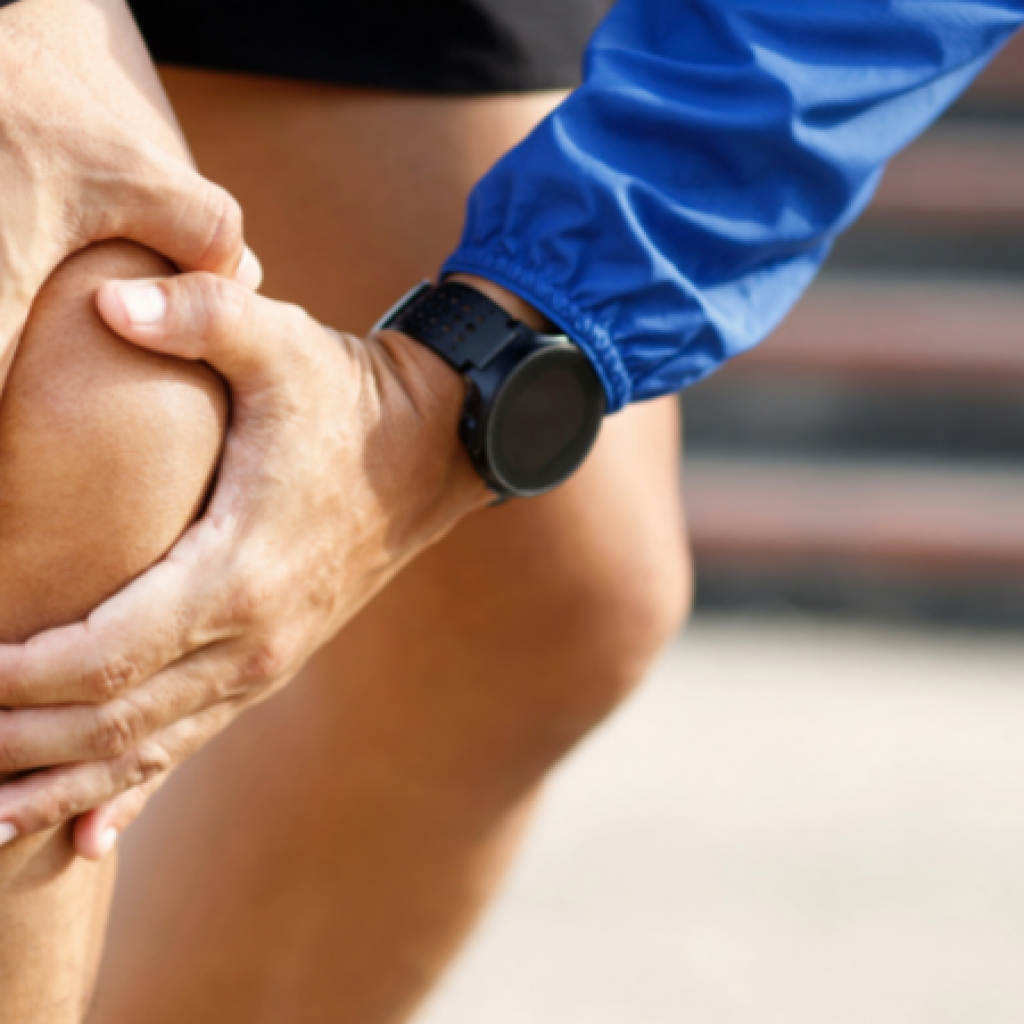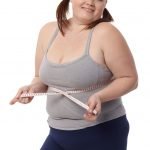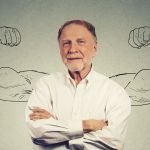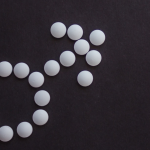SAMUEL G OLTMAN, ND
Human beings are not fragile collectibles that must be kept on the shelf in mothballs to be preserved in pristine condition. We are regenerative beings. Human beings respond to stress with strength given the proper conditions. This is the healing power of nature. The key to aging gracefully is not to eliminate stress – the key to aging gracefully is to optimize stressors and one’s response to them.
Stress of any kind – inflammation, toxins, injury, fear, responsibility – interacts with individuals on a hormetic curve. The curve can vary widely from patient to patient, but the principle remains constant: some amount of perturbation from homeostasis stimulates growth, strength, regeneration, and healing, while a larger dose has the opposite effect.1 There are obvious, simple habits we can integrate daily to achieve an optimal hormetic response, but advances in medical science are revealing more specialized avenues to accomplish this goal as well. It is the physician’s responsibility to understand this with each patient and help guide them into their individual hormetic window or “Goldilocks zone.”
Considering Osteoarthritis
Osteoarthritis (OA) is the common diagnosis to describe the effects of aging on a joint. There are many OA variations and accompanying secondary issues, including ligament laxity, fibrocartilage tears, muscle atrophy, and excessive inflammation. But at its most basic, joint aging simply involves degenerative changes of the bone, cartilage, and connective tissues that result in OA. Spine pain and degeneration is more nuanced and complex than joint OA, but it does follow a similar generic pattern, albeit with more specific considerations that are beyond the scope of this article.
OA is the most common form of arthritis and the fastest growing cause of disability in the world. It is expected to continue to grow in prevalence. The causes are multifactorial and have a strong correlation with both metabolic health and previous injury. Metabolic health issues that predispose patients to developing OA include excessive body weight, insulin resistance, high cholesterol, and a sedentary lifestyle.2 Put another way, patients with a diminished healing capacity secondary to metabolic dysfunction cannot respond properly to stress; as a result, they physically break down more quickly over time. Previous joint injury is the other primary factor to consider, especially in metabolically healthy patients below the age of 50. In the knee, for example, nearly half of patients who experience a meniscus tear and/or anterior cruciate ligament rupture will end up with early-onset OA.3 Post-traumatic OA accounts for up to 12% of the total OA prevalence and is unique in that its genesis can be traced to a specific memorable event or injury, which can be leveraged to motivate the patient toward early intervention. If a patient has a history of a significant injury, treatment should not be delayed until OA develops.
The importance of effective OA treatment goes far beyond reducing physical pain, which on its own is very important. The inability to move affects every system in the body negatively and leads to accelerated aging and morbidity in areas including cardiovascular, hormonal, digestive, and cognitive/mental health. Utilizing the full scope of treatment options and applying cutting-edge therapies in orthopedic medicine where appropriate should be embedded in every OA treatment plan.
Foundational Treatment
The entire naturopathic toolbox is available for treating joint dysfunction and maintaining joint health. This will not be a comprehensive review, but diet,2 exercise, sleep,4 targeted nutritional supplements,5 hormone replacement therapy,6 and regenerative injection therapy all need to be considered along with pharmaceuticals and surgery when necessary.
Exercise is the single most powerful regenerative antiaging medicine available. It is widely available to anyone regardless of material resources and is more impactful than any fistful of supplements. Physical activity has countless positive antiaging benefits beyond preserving joint health. The crucial point is that physical activity operates on a hormetic curve that can vary widely between patients. There is no one-size-fits-all approach across patients and for every individual, the optimal type and amount of movement changes as their needs and context shift.
In my experience, most people do not do anywhere near enough strength training or high-intensity exercise, yet they overemphasize low-to-moderate cardiovascular activity. It is true that any exercise helps joint health and benefits OA.7 But many patients solely engage in walking as their primary form of exercise, and it’s simply not enough – the exercise dose is too low to achieve an optimal hormetic response. Walking doesn’t translate into the strength required to get up off the ground (or toilet). Squatting and lunging (with only one’s body weight) are great, simple examples of something more strength-oriented that gets a patient into that hormetic window. Simple upper-body exercises are also indispensable for the same reasons: walking doesn’t make your shoulders or grip stronger. Maintaining muscle strength and promoting optimal endogenous hormone levels through proper movement is irreplaceable antiaging joint medicine.8,9
Furthermore, while movement like walking has proven health benefits, it’s not antiaging and doesn’t reduce all-cause mortality. Only high-intensity exercise, defined as 6+ metabolic equivalents (METs), or 6 times one’s basal metabolic rate, reduces all-cause mortality. The more you do, the lower your risk.10,11 We must be encouraging our patients (assuming they are medically able) to engage in physical activity that is challenging enough that they cannot hold a conversation. Doing higher intensity activity does not automatically mean we are wearing down our bodies.12 Without this piece, even once a week, the patient is not entering the hormetic “Goldilocks zone” and is missing out on the most straightforward way to live longer and healthier.
The catch-22 for physicians comes when establishing care with a patient who already has joint pain that is preventing them from achieving an optimal amount of physical movement. We need movement for the health of the joints, and we need movement for the broad antiaging effect it has on the whole person. In cases like these, where joint pain and dysfunction prevents an effective hormetic response, the practitioner should consider more direct treatments that can help reverse joint pain and heal age-related damage.
Orthobiologic Treatment
Specific, targeted, powerful therapies that can be employed to stimulate and harness the self-healing response should be increasingly considered for our patients as the evidence for these treatments accumulates. Platelet rich plasma (PRP) and autologous adipose tissue grafting (AATG) are two therapies that directly target the effects of aging and are showing significant promise in reducing OA-associated joint pain and slowing the aging-related decline in joint function. In terms of the hormetic response, both therapies produce a beneficial short-term inflammatory response, as opposed to a low grade, smoldering degenerative inflammation.
PRP is a solution of the patient’s own growth factors that, upon injection into a joint, ligament, tendon, or fibrocartilage, stimulate the patient’s healing response as if they’d been injured – but without injuring anything. The resulting healing cascade results in anabolic processes that modulate inflammation and heal damaged tissue. PRP is a great tool for preventive approaches (after an injury that is known to increase OA development late in life) or for mild-to-moderate degenerative joint disease.13
AATG is increasingly my treatment of choice for most aging joints that are beyond mild degenerative changes. The primary virtues of AATG over PRP are that it is generally only needed to be done once every couple of years (as opposed to a monthly series for PRP), pain reduction lasts much longer, and it has a greater capacity to result in image-confirmed disease reversal. These differences are accounted for by the presence of adipose-tissue–containing pericytes, the originators of mesenchymal stem cells (MSCs).14 These, along with the adipose tissue, act as a scaffold to cushion the joint and extend the length of time that therapeutic action occurs. In my practice, I use microfragmented adipose tissue (MFAT) mixed with PRP to enhance therapeutic action. AATG with MFAT is showing increasing promise for long-term pain relief (at least 2-3 years) and restoration of joint function in OA.15-18 AATG should be discussed with every patient that has significant OA, especially when the other option is pain management until a joint replacement.
Bone marrow aspirate is another common source of autologous MSCs and growth factors. It has been shown to be effective in treating OA but not conclusively superior to PRP or AATG.19 Given the increased invasiveness of the harvest process and limited ability to perform it in most states due to licensure laws, PRP and AATG remain the best choices.
The elephant in the orthobiologic room is allogeneic embryonic and amniotic tissue products. There is so much variation company-to-company and product-to-product that this therapy is difficult to discuss broadly. However, the main concern with these products currently is whether there are any living cells in them at all.20 There are technological barriers to bringing this type of therapy into the fold that will presumably be overcome soon, but there are also large regulatory barriers from the FDA that are likely more difficult to overcome.
All the discussed orthobiologic therapies are currently experimental or exploratory, as there is a widespread lack of standardization across studies for these methods. There are, however, hundreds of proof-of-concept studies, thousands of patient cases, and very sound science behind the mechanism of action, building from the foundation of traditional prolotherapy.
Opportunity Costs
In patients with advancing joint disease, any treatment chosen presents a potential opportunity cost of the other possible treatments. Choosing a particular treatment means you forego another and the potential benefits it may have. Having a multitiered approach limits this by allowing multiple treatments at once, but some procedures are mutually exclusive for a period. Moreover, choosing an inappropriate therapy can lead to more time in pain and continued joint deterioration. Physicians must be able to recommend the appropriate treatment given a patient’s condition.
For example, only recommending a joint supplement when there’s radiographic evidence of disease that correlates with symptoms is foregoing other effective treatments that could likely benefit the patient more. PRP alone for a patient with grade 3 OA will likely not be powerful enough; it could be a waste of time and money while creating unnecessary discomfort and recovery associated with a series of PRP injections. In a case like this, AATG has a much higher likelihood of success. Finally, recommending everything above in a patient with end-stage grade 4 OA has the opportunity cost of the eventual benefit of a joint replacement.
Choosing the appropriate tool to address OA issues may involve uncertainty. but that is where a thorough PARQ is so valuable. The PARQ I do with my patients when discussing the full realm of joint treatments is straightforward and framed in a probabilistic manner—in other words, it communicates to the patient that nothing is certain, and nothing works for everyone every time. It details the recovery associated with treatment, emphasizes the things the patient can do to help themselves succeed (including exercise, diet, and sleep), considers the financial impact of the therapies, and openly admits the possibility of failure. Both patients and doctors may have an attachment to therapies that are more “natural,” but I urge my patients to simply keep in mind the goal: pain-free function. That is what will have the greatest positive impact.
We are Regenerative Beings
Time, stress, and aging are unavoidable facts of human life. Disability from joint pain need not be so. There are things we can do both behaviorally and interventionally to reduce the risk that joint pain becomes a barrier to movement—the foundation for so many aspects of health.
The naturopathic toolbox is full of tools that help prevent premature joint aging and reduce the pain associated with joint degeneration. It is difficult to overstate the importance of daily movement and exercise with regular high-intensity, strength-building activity. The field of orthobiologic therapy will continue to amass evidence and develop increasingly nuanced approaches to address the degenerative changes associated with aging. But it pays to remember that we are regenerative beings, and knowing how to harness the innate self-healing response, regardless of the form it may take, is the foundation of naturopathic medicine.
[REFS]
- Lushchak VI. Dissection of the hormetic curve: analysis of components and mechanisms. Dose Response. 2014;12(3):466-479.
- Thomas S, Browne H, Mobasheri A, et al. What is the evidence for a role for diet and nutrition in osteoarthritis?. Rheumatology (Oxford). 2018;57(suppl_4):iv61-iv74.
- Anderson DD, Chubinskaya S, Guilak F, et al. Post-traumatic osteoarthritis: improved understanding and opportunities for early intervention. J Orthop Res. 2011;29(6):802-809.
- Smith MT, Quartana PJ, Okonkwo RM, et al. A. Mechanisms by which sleep disturbance contributes to osteoarthritis pain: a conceptual model. Curr Pain Headache Rep. 2009;13(6):447-454.
- Liu X, Machado GC, Eyles JP, et al. Dietary supplements for treating osteoarthritis: a systematic review and meta-analysis. Br J Sports Med. 2018;52(3):167-175.
- Hussain SM, Cicuttini FM, Giles GG, et al. Relationship between circulating sex steroid hormone concentrations and incidence of total knee and hip arthroplasty due to osteoarthritis in men. Osteoarthritis Cartilage. 2016;24(8):1408-1412.
- Kraus VB, Sprow K, Powell KE, et al. Effects of Physical Activity in Knee and Hip Osteoarthritis: A Systematic Umbrella Review. Med Sci Sports Exerc. 2019;51(6):1324-1339.
- Luc-Harkey BA, Safran-Norton CE, Mandl LA, et al. Associations among knee muscle strength, structural damage, and pain and mobility in individuals with osteoarthritis and symptomatic meniscal tear. BMC Musculoskelet Disord. 2018;19(1):258.
- Storer TW, Basaria S, Traustadottir T, et al. Effects of Testosterone Supplementation for 3 Years on Muscle Performance and Physical Function in Older Men. J Clin Endocrinol Metab. 2017;102(2):583-593.
- Lee IM, Hsieh CC, Paffenbarger RS Jr. Exercise intensity and longevity in men. The Harvard Alumni Health Study. JAMA. 1995;273(15):1179-1184.
- Mok A, Khaw KT, Luben R, et al. Physical activity trajectories and mortality: population based cohort study. BMJ. 2019;365:l2323.
- Williams PT. Effects of running and walking on osteoarthritis and hip replacement risk. Med Sci Sports Exerc. 2013;45(7):1292-1297.
- Zhang B, Yu J, Fan D, et al. Effect of Intraarticular Injection of Platelet-Rich Plasma on Knee Osteoarthritis: A Multicenter Retrospective Clinical Study. J Healthc Eng. 2022;2022:1788153.
- Zhang J, Du C, Guo W, et al. Adipose Tissue-Derived Pericytes for Cartilage Tissue Engineering. Curr Stem Cell Res Ther. 2017;12(6):513-521.
- Heidari N, Borg TM, Olgiati S, et al. Microfragmented Adipose Tissue Injection (MFAT) May Be a Solution to the Rationing of Total Knee Replacement: A Prospective, Gender-Bias Mitigated, Reproducible Analysis at Two Years. Stem Cells Int. 2021;2021:9921015.
- Heidari N, Slevin M, Zeinolabediny Y, et al. Comparison of the Effect of MFAT and MFAT + PRP on Treatment of Hip Osteoarthritis: An Observational, Intention-to-Treat Study at One Year. J Clin Med. 2022;11(4):1056.
- Screpis D, Natali S, Farinelli L, et al. Autologous Microfragmented Adipose Tissue for the Treatment of Knee Osteoarthritis: Real-World Data at Two Years Follow-Up. J Clin Med. 2022;11(5):1268.
- Heidari N, Noorani A, Slevin M, et al. Patient-Centered Outcomes of Microfragmented Adipose Tissue Treatments of Knee Osteoarthritis: An Observational, Intention-to-Treat Study at Twelve Months. Stem Cells Int. 2020;2020:8881405.
- Keeling LE, Belk JW, Kraeutler MJ, et al. Bone Marrow Aspirate Concentrate for the Treatment of Knee Osteoarthritis: A Systematic Review [published online ahead of print, 2021 Jul 8]. Am J Sports Med. 2021;3635465211018837.
- Centeno CJ, Pastoriza SM. Past, Current and Future Interventional Orthobiologics Techniques and How They Relate to Regenerative Rehabilitation: A Clinical Commentary. Int J Sports Phys Ther. 2020;15(2):301-325.
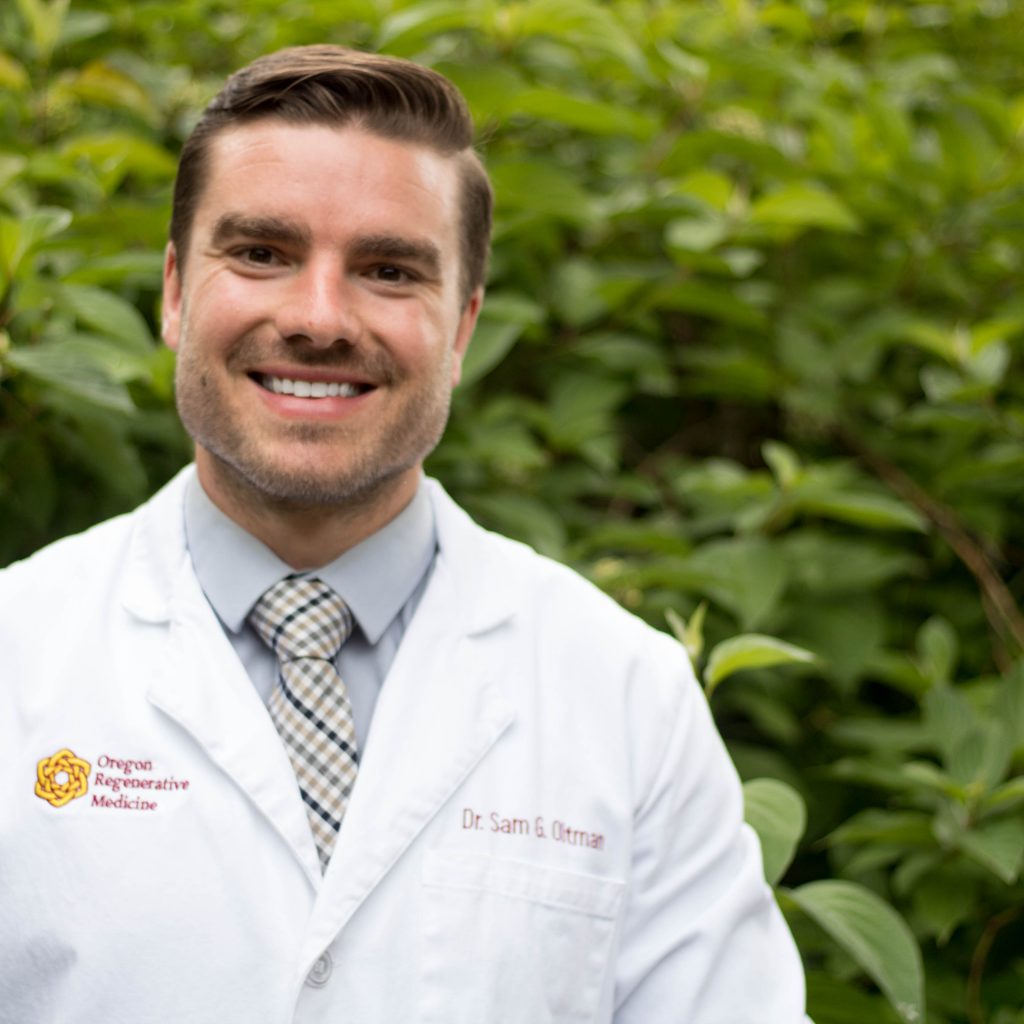
Samuel G Oltman, ND, practices whole-person orthopedic and sports medicine in Portland, OR at both Oregon Regenerative Medicine and Northwest Foot & Ankle. Dr Oltman is president of the Naturopathic Orthopedic Medicine Academy (NOMA), a non-profit dedicated to being the leader in orthopedic education within the profession.

